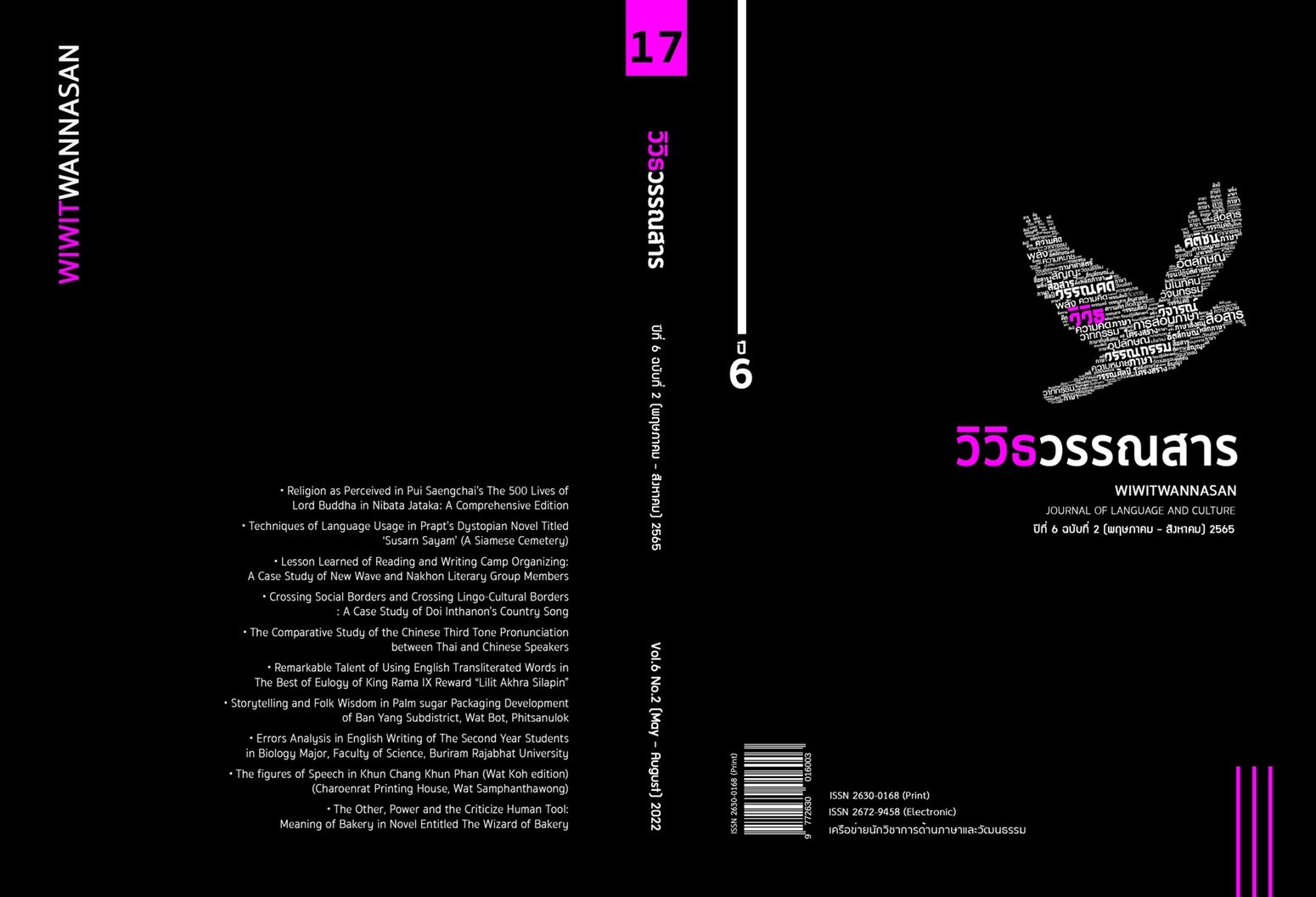The Comparative Study of the Chinese Third Tone Pronunciation between Thai Learners and Native Chinese Speakers
Main Article Content
Abstract
This research aimed to compare the Chinese third tone pronunciation between Thai learners and native Chinese speakers. The study sample consisted of 23 female freshmen who enrolled on Chinese Phonetics for 45 hours and 3 female Chinese native instructors. The researcher collected data by recording audio files of tones in three Chinese monosyllables, each of which was pronounced three times. The audio files from the study sample were analyzed and compared the frequency and tone waveforms by using the phonetic software Praat version6.1.29. The results are as follows. 1) The waveforms of Thai learners and native Chinese instructors are clearly different. 2) The minimum frequency of Thai learners' tone is higher than native Chinese's tone. 3) The tone average of Thai learners is higher than native Chinese instructors.
Article Details

This work is licensed under a Creative Commons Attribution-NonCommercial-NoDerivatives 4.0 International License.
Copyright is that of the journal any reproduction must be permitted by the editor of journal
References
Liu Xun .(2010). The Principle of Chinese as a second Languages (14th Ed.)
Beijing. High Education Publishing. (In Chinese)
Liu Yu. (2015). An Experimental Phonetic Research on Teaching Mandarin Tones to Thai
Students. Chinese Studies Journal, Kasetsart University, 8 (1), 24-37. (In Thai)
Nie Jin. (2017). Discuss how to train students the correct pronunciation of mandarin tones
in Thailand. Chinese Studies Journal, Kasetsart University, 10 (1), 218-227. (In Chinese)
Prapin M. (2002). Chinese Mandarin Grammar (2nd Ed.). Bangkok: The Project of
Academic forum, Faculty of Arts, Chulalongkorn University. (In Thai)
Ren Jingwen. (2008). Chinese Grammar Parallel Thai-Chinese Grammar. Bangkok.
Amarin Printing & Publishing. (In Thai)
Sunee L. (2016). A Comparative Study of Thai and Chinese Phonology for the Use
of Basic Thai Language Teaching as A Foreign Language. Suthiparithat Journal,
(93), 33-46. (In Thai)
Shi Feng. (2009). Exploration of Experimental Phonology. Beijing: Beijing
University Publishing. (In Chinese)
Tulyanusorn C. & Qu Xiaohong. (2017). Error Analysis in Chinese Pronunciation of Business
Chinese Students, International College, Chiang Mai Rajabhat University. Journal of Graduate Research, 8 (1), 115-124. (In Thai)
Wang Tiansong. (2018). The Research About Teaching Thai Students Chinese Pronunciation. Journal of Humanities and Social Sciences Valaya Alongkorn, 13 (1), 253-261. (In Chinese)
Worrawan S. (2013). Linguistic of Thai (2nd. Ed.). Nontaburi: Sampanchanya Publication.Yang Quan, Hathai Sae jia. (2020). A Study of Chinese Phonetic Errors and Chinese Phonetic Teaching for the First Year Undergraduates of Chinese major Srinakharinwirot University .Manutsart Paritat: Journal of Humanites, 42 (2), 39-58. (In Chinese)
Yang Zhitong. (2018). Research on errors made by elementary Thai students in Chinese pronunciation falling rising tone: Based on Attwit Commercial Technical School’s students (Master’s thesis). Lanzhou University. China PRC. (In Chinese)


